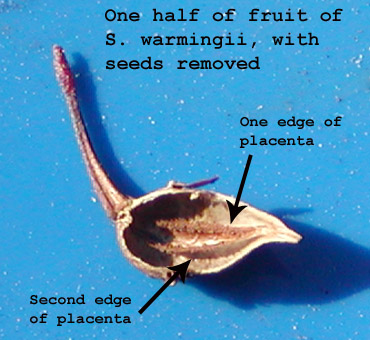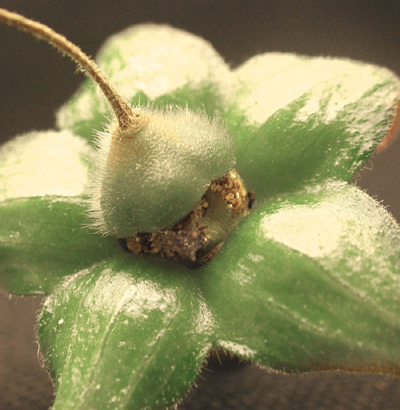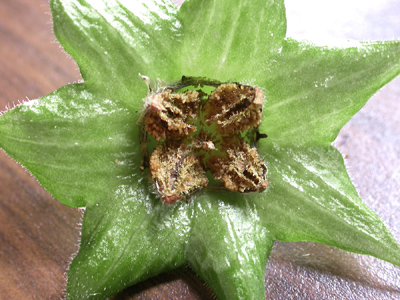Placentas
In human reproduction, the placenta (see the etymology) is fetal tissue. However, in plants, the placentas are maternal tissue. Only the embryo and endosperm are progeny tissue (I'm pretty sure the seed coat is maternal tissue, but I should check that someday). Through the placentas, the parent supplies nutrition to the progeny. Or to put it another way, the progeny steal nutrition from the parent.
[This is a fascinating subject. The mother mammal or mother plant has many chances to reproduce; therefore it does not wish to risk everything on this current opportunity. The embryo (or seed), on the other hand, has only once chance: this one. So it is not inclined to a give-and-take attitude. The parent/seed (or mother/embryo) interaction is a somewhat civilized war: progeny want everything the mother can afford, while the mother organism will impart what it can, given the odds. The intriguing part is that the mother and the progeny share at least half of their genes (in reality, more than 99%), so that the abilities that the progeny are using against the mother organism are almost certainly abilities that they inherited from the mother -- and which the mother used against its own progenitor! Think about that the next time you celebrate your mother's birthday.]
This picture of a fruit of Sinningia warmingii (the fruit is actually upside down) shows the two edges of one of the two placentas in a sinningia seed pod. Try to visualize them as one edge each of the two leaves (carpels) which went into making up the ovary, which became the fruit. The edges curled around and in, so that the point of junction of the leaves was a little way back from the leaf edge. When the fruit dehisces (splits open to release the seeds), it does so down the middle of each carpel "leaf", so that each half of the split-open fruit contains one half of each of the two carpels. In the picture, the boundary between the two carpels runs right between the two placenta edges.


